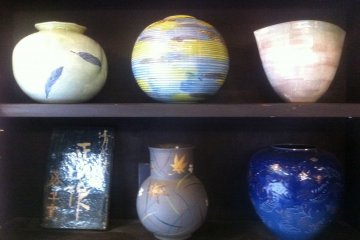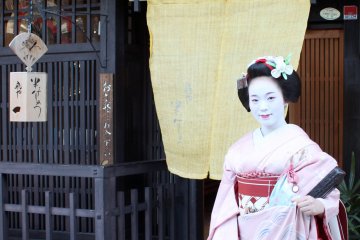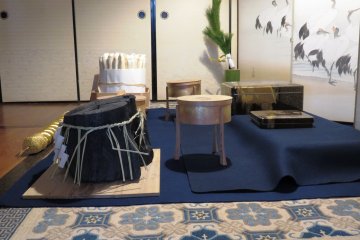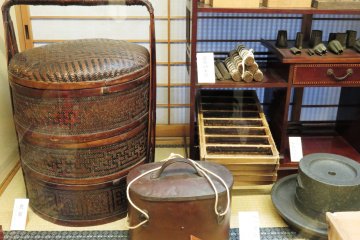Only in Japan, do you see the humble lunchbox turned into a work of art. Each day, millions of parents spend hours decorating their children’s lunchboxes with panda-shaped rice and Octopus shaped sausages. It gives them a sense of connection, a reminder that your parents' love is never far away.
The home of the bento box is in this traditional machiya house, with no neon signs or colourful anime characters to give away the nature of the treasures inside. On the second floor is the Kyoto Bento Box Museum, while the ground floor is the home of Hanbei a maker of Kyofu, a traditional and nutritious food made from wheat flour.
The Heian Period
You may wonder why some of the bento boxes here are so old. Well, part of the reason is that the original founder of Hanbei, started collecting bento boxes in the 17th century. This small museum takes us back to when bento boxes were first used, in the Heian Period (794 to 1185), whether on a boat trip or a cherry blossom picnic. Originally dried boiled rice was used, and then in the Azuchi-Momoyama period (1574–1600), lunch boxes started to be made with lacquered wood.
The Edo Period
The Edo period (1603 to 1867) gave rise to a time of peace and a rising middle class, with common people having more spare time. And food culture had caught up with this, allowing them to enjoy food during their leisure hours. Whether it is sushi, onigiri rice balls, or skewers, common folk can enjoy bento-style meal boxes while watching the Sumo, Noh, or Kabuki.
Imagine listening to the music from 1781. I just did today, with music from the era of Mozart and Beethoven. Now, imagine enjoying the recipes from over 300 years ago. I just did it in the Kyoto fu shop. Not just a museum, but a living nursery to the culture and traditions of this ancient capital. It is not just about an age-old recipe, but one that has improved, little by little, for 300 years. This Kyoto tofu company was founded in 1689 by Hanbei Tamaki. Today, it makes tofu for monasteries, the general public, and for the Imperial Family. Kyoto’s bento box museum is not just an archive of the past but living today in the kitchens from Hokkaido to Okinawa and around the world in bento culture and art, an act of love and connection.
The Bento Box Museum
The collection here is all personally selected by the family business, and accumulated over 300 years. Each piece tells a story from cherry blossom viewing to autumn leaves viewing. For example, spring bento boxes have petals of cherry blossoms inlaid with mother-of-pearl, while summer boxes are made with well-ventilated materials to keep them cool. There are also bento boxes for New Year celebrations, which traditionally revolved around o-sechi, symbolic dishes representing prosperity and health.











